See How Turkish Artist Onur Hastürk Turns a Contemporary Eye on His Classical Training as a Miniaturist
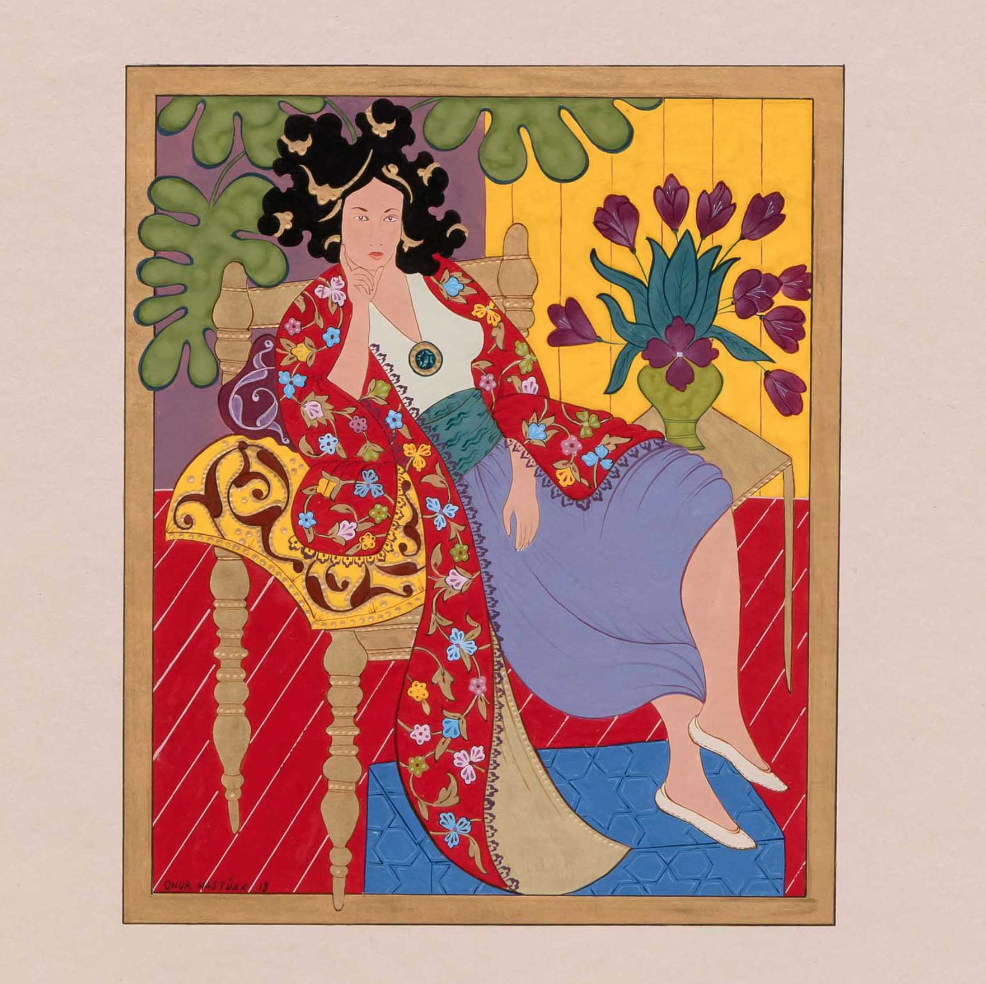

Katie White

With an ethos more of playful abandon than academic analysis, the Turkish artist Onur Hastürk explores the age-old reinventive visual exchange between the East and West in his solo exhibition “Assimilation,” currently on view at Anna Laudel Gallery in Düsseldorf.
The 37-year-old artist first began his career training as a miniaturist, a classical Ottoman art form of small, colorful vignetted scenes that adorned 15th- and 16th-century manuscripts. These brightly colored, decoratively patterned works had their roots in east Asian artistic precedents. In later centuries, they would captivate 18th-and 19th-century Western artists, from Ingres to Matisse, and inspire their own Orientalist visions.
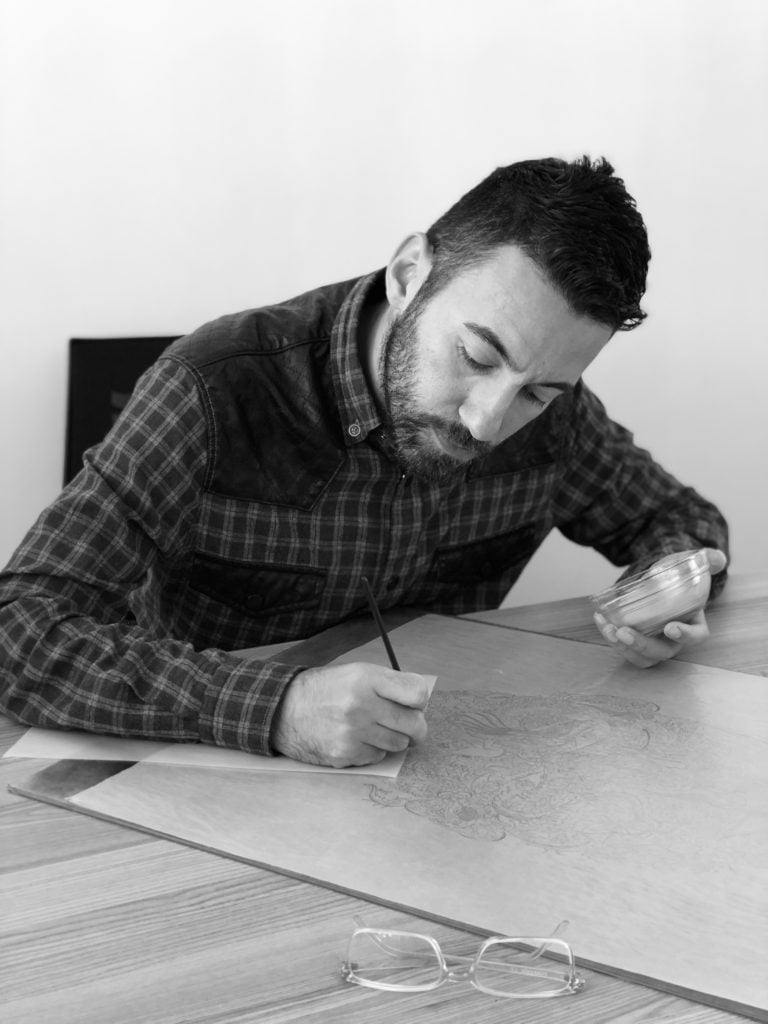
Onur Hastürk at work in his studio. Photo by Murat Kaan.
Hastürk engages directly with these themes to create his own intricate and jewel-like visions, which range from gold-leafed Starbucks coffee cups detailed with Ottoman miniatures to Matisse-inspired silhouettes on ceramic plates.
Recently, the artist shared insights into his practice, which he hopes cultivates transcultural and transhistorical dialogues. Discover more about his work with the Artnet Gallery Network.
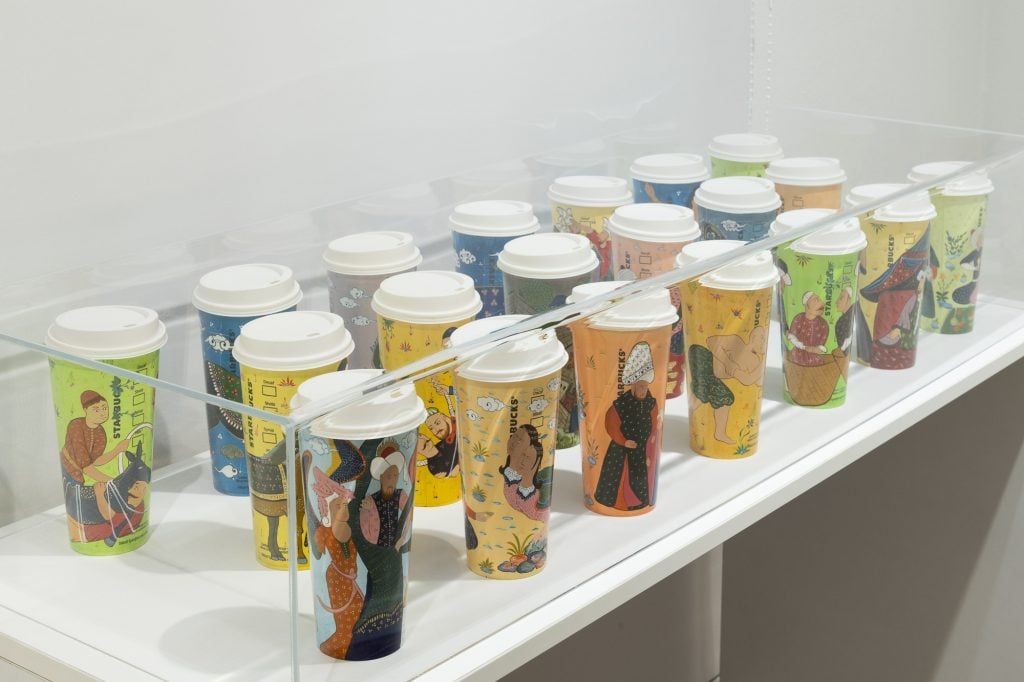
Installation view of “Onur Hastürk: Assimilation” (2020). Courtesy of Anna Laudel, Düsseldorf. Photo by Katja Ilner.
If you had to describe your own work in three sentences or less, what would you say?
My work builds bridges between traditional and contemporary art while avoiding discrimination and alienation. It denies all human-made borders, such as gender, color, language, religion, beliefs, and sexual identity, and invites audiences to be more aware, free, and redemptive.
What are the most essential tools in your studio?
A lead pencil, tracing paper, and an eraser. And a touch of magic.
Tell us a bit about your process. Do you have a favorite time of day to work or a particular technique that you prefer?
A neat and very detailed technical work and a focused environment are essential to creating my art. That’s why I manage my time according to the daylight. Nighttime helps me connect spiritually with a collective conscience and I use that time to sketch the things on my mind. Techniques that I use solely depend on the conceptual nature of the artwork and the needs of expression. I discover new techniques while creating new artwork. Every part of it, from deciding the frames to sketching, is a great joy and excitement for me.
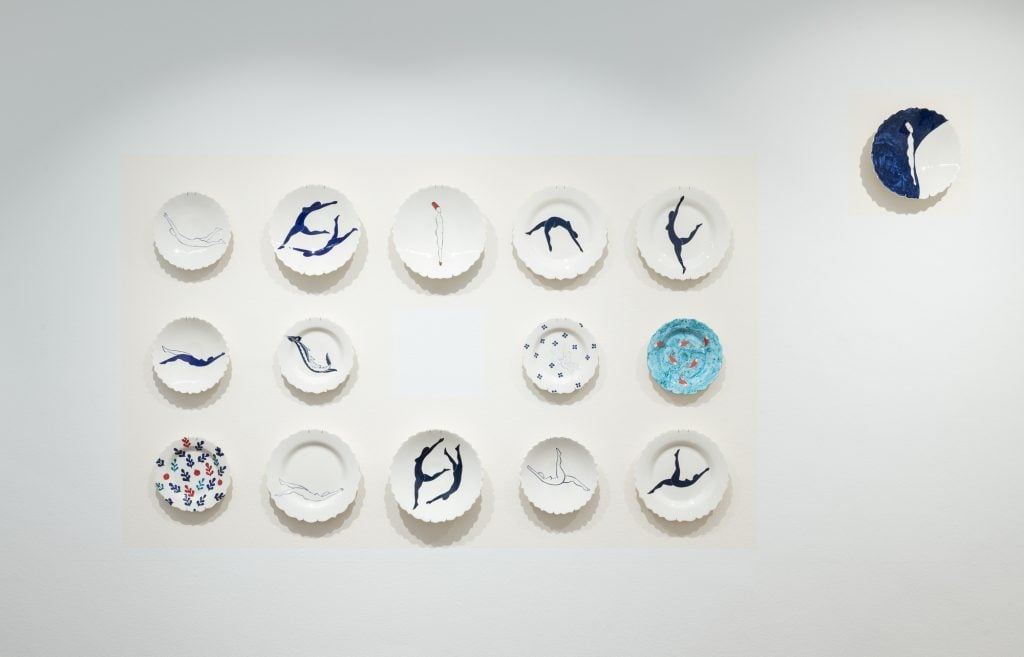
Installation view of “Onur Hastürk: Assimilation” (2020). Courtesy of Anna Laudel, Düsseldorf. Photo by Katja Ilner.
You were trained as a miniaturist artist. What do you most enjoy about that style and its history?
The Shiraz period, between the 15th and 16th centuries, has the highest quality of craftsmanship and aesthetics in miniature art in my opinion. I am also inspired by the famous artist Levni, who proposed a contemporary approach to miniature art during the late Ottoman Empire period and incorporated different techniques and compositions with lots of colorful personality.
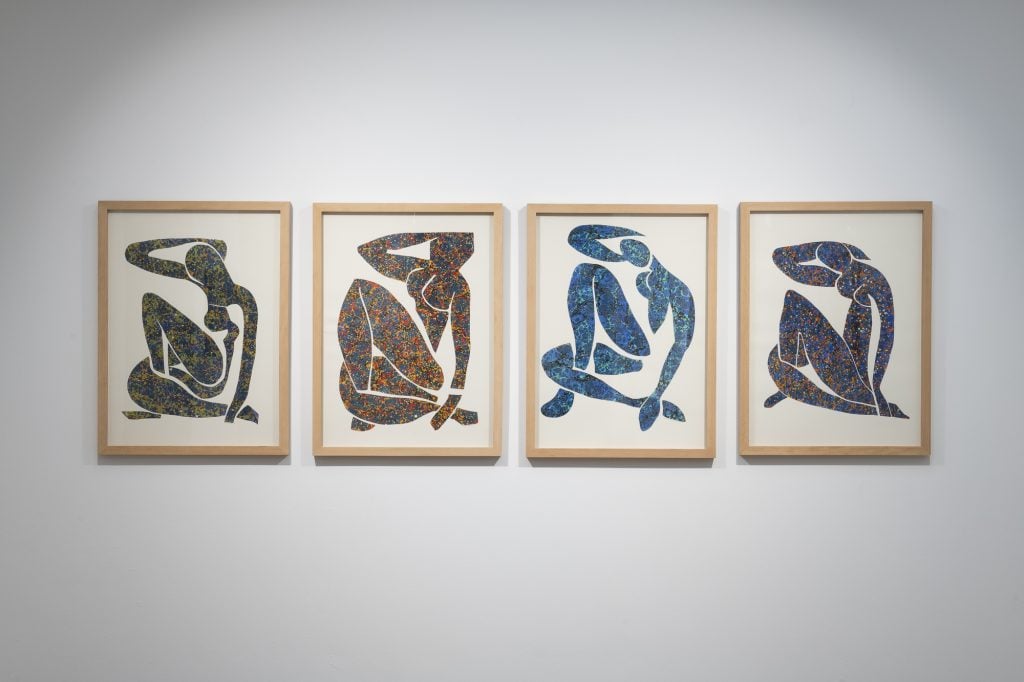
Installation view of “Onur Hastürk: Assimilation” (2020). Courtesy of Anna Laudel, Düsseldorf. Photo by Katja Ilner.
Are there any thinkers or philosophers who inspire you?
I believe that moments capture the meaning of an artwork and an idea. I interiorize the existentialism and unity philosophy of Rumi. I don’t differentiate between artists or philosophers of the past or present. Instead, I just try to concentrate on the moment of interaction as an inspiration.
Your recent works make nods to Matisse and Warhol. Who are the artists in history that you most admire and why?
Hieronymus Bosch is my favorite. We know very little about his work, but his artistic vision, technique, and style are timeless.
If you could own any artwork in the world (no restrictions) what would it be?
Without a doubt, Hieronymus Bosch’s The Garden of Earthly Delights.
“Onur Hastürk: Assimilation” is on view at Anna Laudel, Düsseldorf, through October 31, 2020.